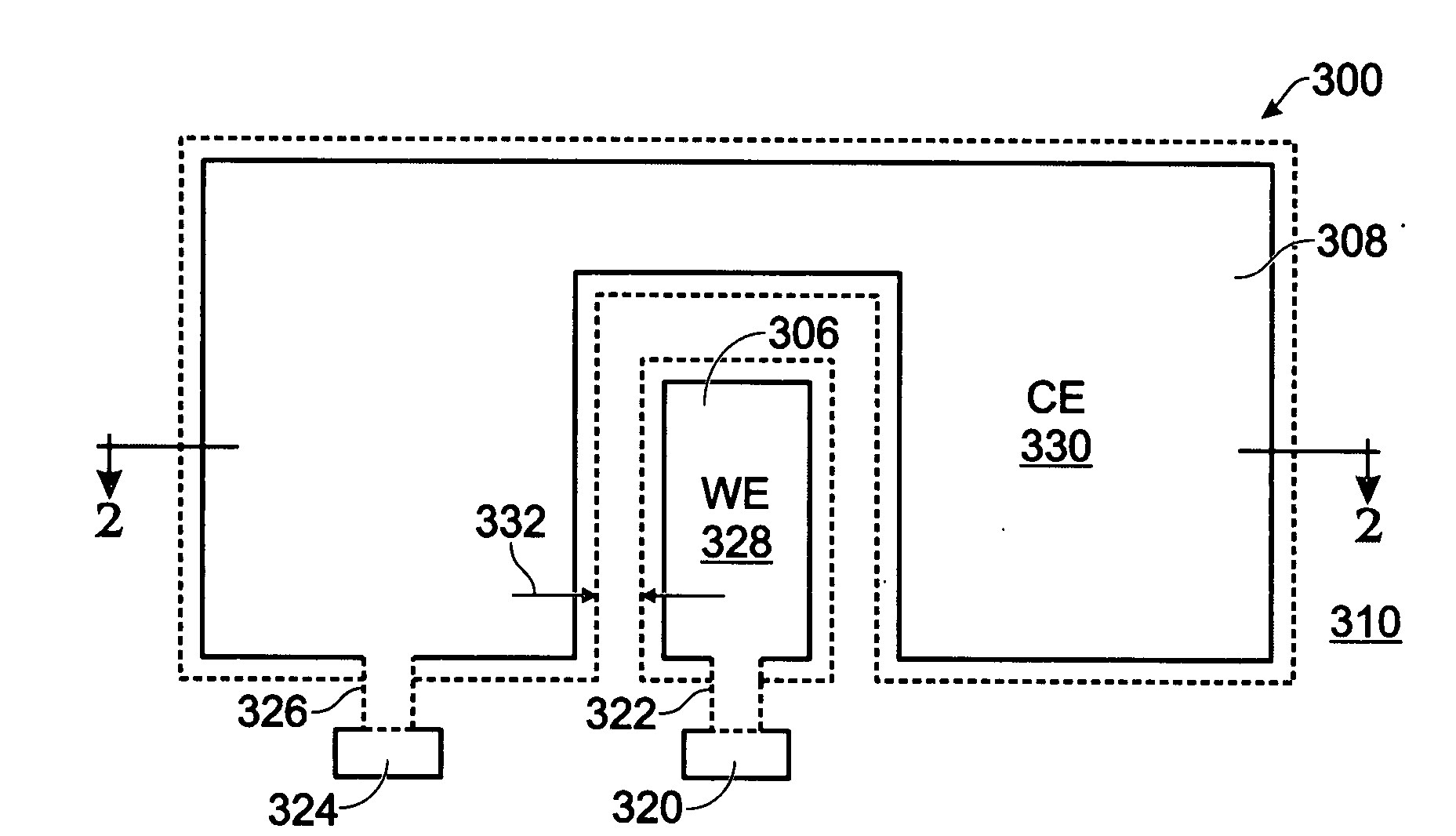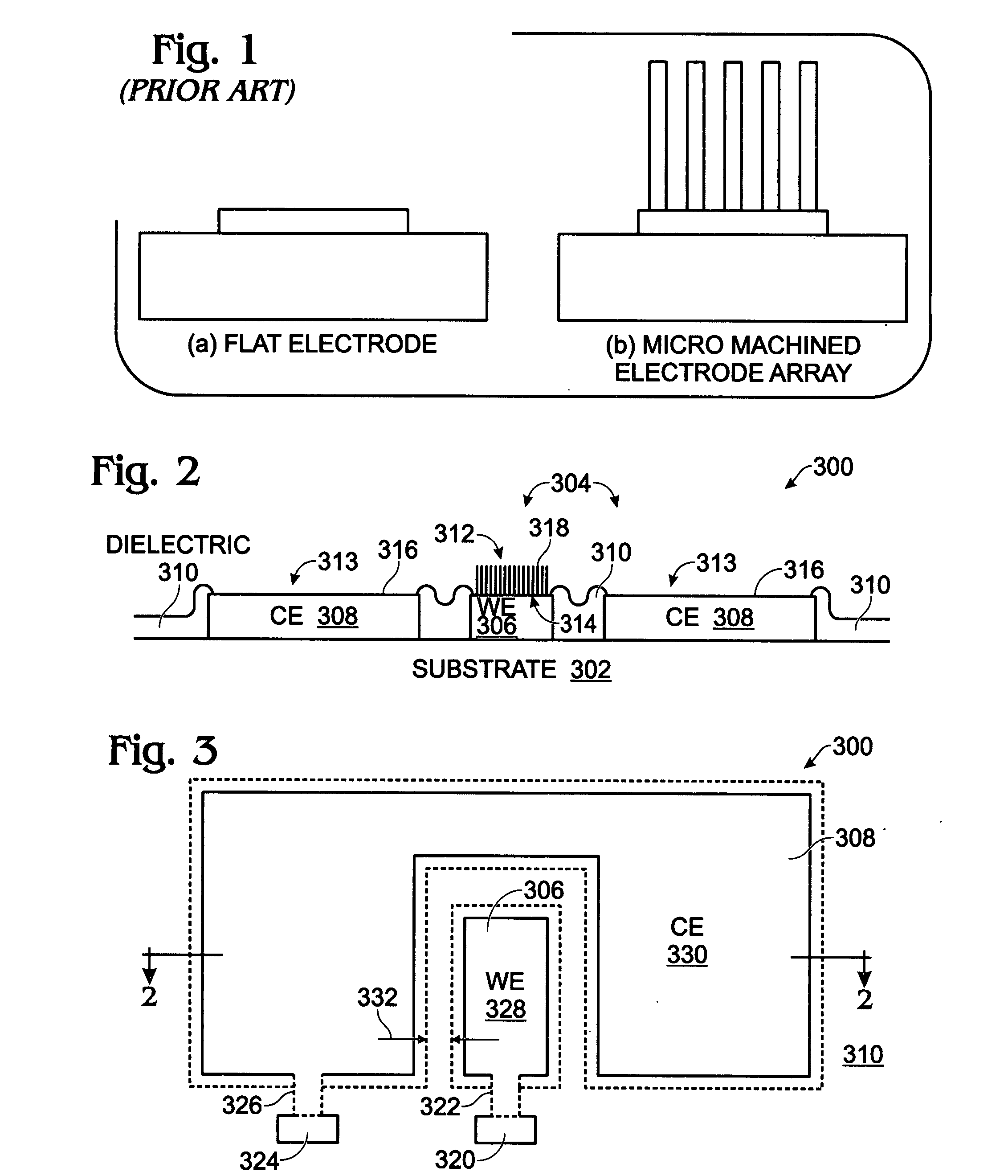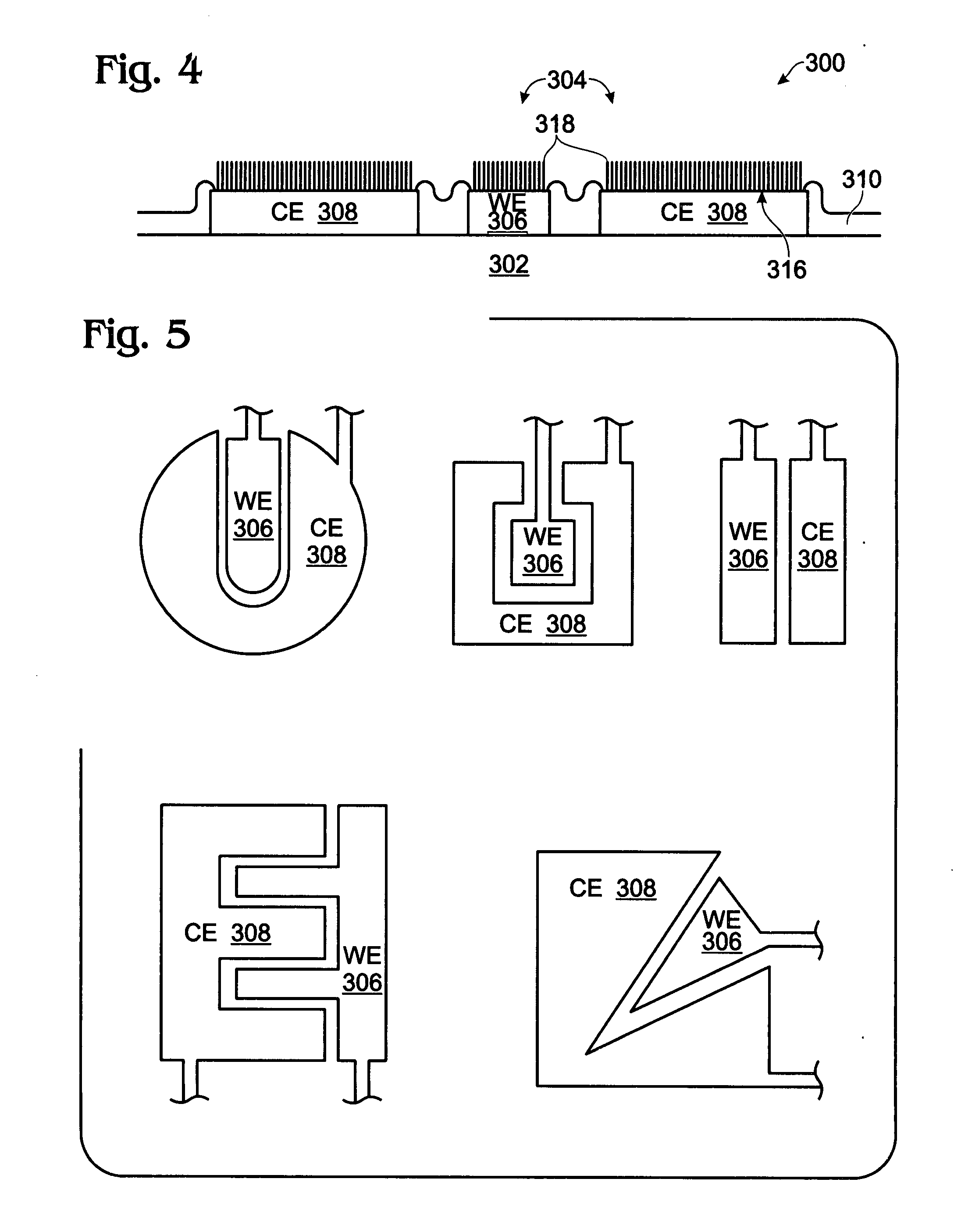IrOx nanowire protein sensor
a protein sensor and nanowire technology, applied in the field of integrated circuit fabrication, can solve the problems of insufficient single protein marker testing, material not suitable for multiplexing detection, and unreachable goal, and achieve the effect of reducing background noise effects and improving signal-to-noise ratio
- Summary
- Abstract
- Description
- Claims
- Application Information
AI Technical Summary
Benefits of technology
Problems solved by technology
Method used
Image
Examples
Embodiment Construction
[0038]FIGS. 2 and 3 are partial cross-sectional and plan views, respectively of an iridium oxide (IrOx) nanowire protein sensor array. The sensor array 300 comprises a substrate 302 and a plurality of electrode pairs 304. For simplicity, FIGS. 2 and 3 show a single pair. Each electrode pair, as represented by pair 304, includes a working electrode (WE) 306 overlying the substrate 302 and a counter electrode (CE) 308 overlying the substrate 302. A dielectric layer 310 overlies the working and counter electrodes 306 / 308. Contact holes 312 and 313 are formed in the dielectric layer 310, exposing regions 314 and 316, respectively, of the working electrode 306 and the counter electrode 308. IrOx (0318 are grown from exposed region 314 of the working electrode 306. In some aspects, single-crystal IrO2 nanowires are grown. The electrode pair 304 may further include a coating of a material such as antibody linker molecules, antibodies, protein blocker agents, or combinations of the above-me...
PUM
| Property | Measurement | Unit |
|---|---|---|
| Temperature | aaaaa | aaaaa |
| Length | aaaaa | aaaaa |
| Angle | aaaaa | aaaaa |
Abstract
Description
Claims
Application Information
 Login to View More
Login to View More - R&D
- Intellectual Property
- Life Sciences
- Materials
- Tech Scout
- Unparalleled Data Quality
- Higher Quality Content
- 60% Fewer Hallucinations
Browse by: Latest US Patents, China's latest patents, Technical Efficacy Thesaurus, Application Domain, Technology Topic, Popular Technical Reports.
© 2025 PatSnap. All rights reserved.Legal|Privacy policy|Modern Slavery Act Transparency Statement|Sitemap|About US| Contact US: help@patsnap.com



